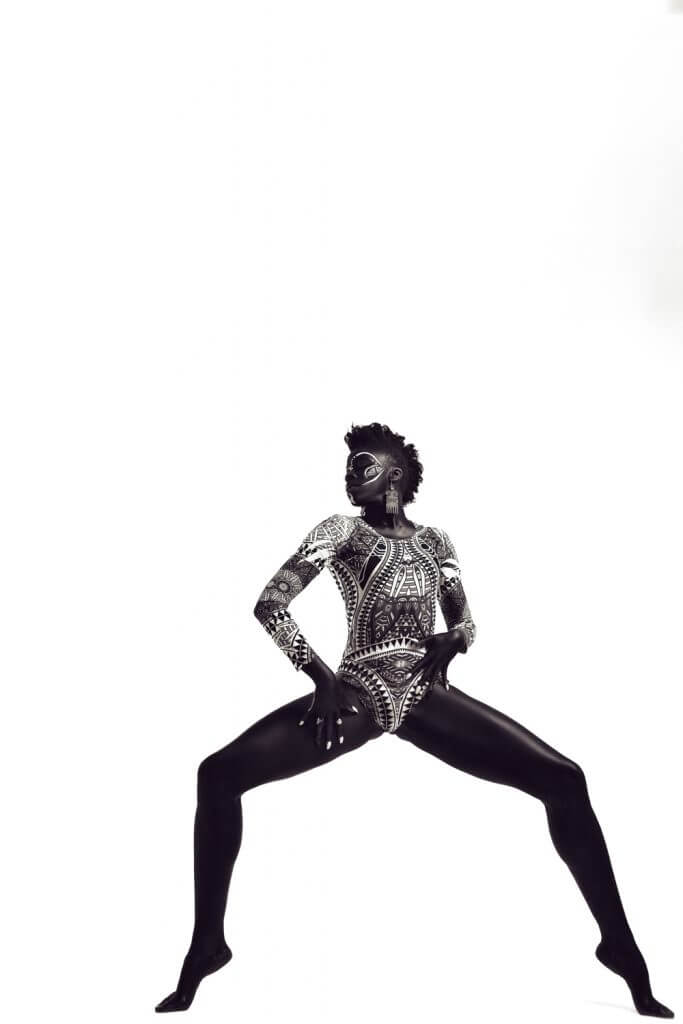Hamilton choreographer draws from her Ghanaian heritage in dance
Meet Esie Mensah
Victoria Chan@vchanimal

Esie Mensah. Photo courtesy of Asiko Photography.
For Esie Mensah, the delicate balance between artistic expression and political commentary lies in one simple ingredient: intention.
While the Hamilton, Ont., choreographer’s portfolio includes a feature in Drake and Rihanna’s “Work” video, and most recently, a live on-stage performance with hip-hop artist French Montana, she is not afraid to use dance as a vessel for social commentary. “The work you choose to do, and the intention behind what it is you’re doing is the way that you can really make dance a political act,” she says. “Being a Black female, being somebody that has the roots of African descent, I just started asking questions… I had this idea of contributing something within my culture on stage.”
Such was the inspiration behind “Akoma,” a dance theatre production that premiered two years ago. It tells the story of a young immigrant who leaves Ghana, his birth country, to move to Canada, but struggles with his identity, wavering with the decision to stay or return home.
Mensah, 32, who wrote and choreographed the piece, added her own story to the mix. “I claim my Ghanaian background in my work and everything I do, but in Ghana, they don’t consider me Ghanaian, they call me Canadian,” she says, recalling a humbling but difficult experience while visiting to the country two years prior. “It was like, you have no idea what I’m doing for this country abroad and even if I’m not born there, isn’t me being present enough? At the same time, can you really claim a place that you’ve only really been to for two months out of my 32 years of living?”
One of Mensah’s most recent projects is “Shades of Blackness,” which she considers her most political work. The piece involves a series of choreographed performances that blend dance and dialogue to explore the complex and painful experiences that arise from “shadeism,” a practice that has existed as long as racism, where discrimination is experienced within cultural communities on the basis of skin colour. Each performance explores how shadeism rears its head in the Black community, from family dynamics to skin bleaching.
Despite its pervasiveness within communities of colour, Mensah admits that shadeism remains a fragile topic, making “Shades of Blackness” both an “interesting gift and a burden” to bear. “The second time we did it, I don’t think I’ve ever cried that much in my life in a very long time,” she recalls. “I felt like I was being cut and slashed because of these words that were being said.”
Mensah adds that her personal struggles with accessing work opportunities due to the colour of her skin is a reminder that shadeism remains deeply ingrained in today’s dance industry,
“I was told from a friend of mine that was a choreographer—we were working on a shoot with a Black director and Black artist—that they didn’t want to hire me because they thought I was too dark for the video,” she says. “The mantra of my career is the fact that being good isn’t enough, I need to be amazing…. It’s frustrating but at the same time, a part of what we have to go through as artists of colour, in order to make sure that your work can be seen by the masses.”
In order to gain more exposure, many fellow Canadian dancers decide to cross over to the American market, a move Mensah had contemplated earlier in her career. “I had an opportunity to get my U.S. papers years ago [but] part of me was like, I feel like I have something to do here,” she says, admitting that choosing to pursue a career in Canada has been bittersweet.
But Mensah says she has gained a lot more for choosing to stay in Canada, a decision that has allowed her to invest in creating more socially conscious pieces—most recently, a dance solo on skin bleaching at the Art Gallery of Ontario.
“We have to be willing to have these conversations and go through the fire so that we can figure out how to expose this to an audience and how to bring this on stage,” she says. “It’s a really interesting dynamic to be in a space that you really sometimes want to run away from.”